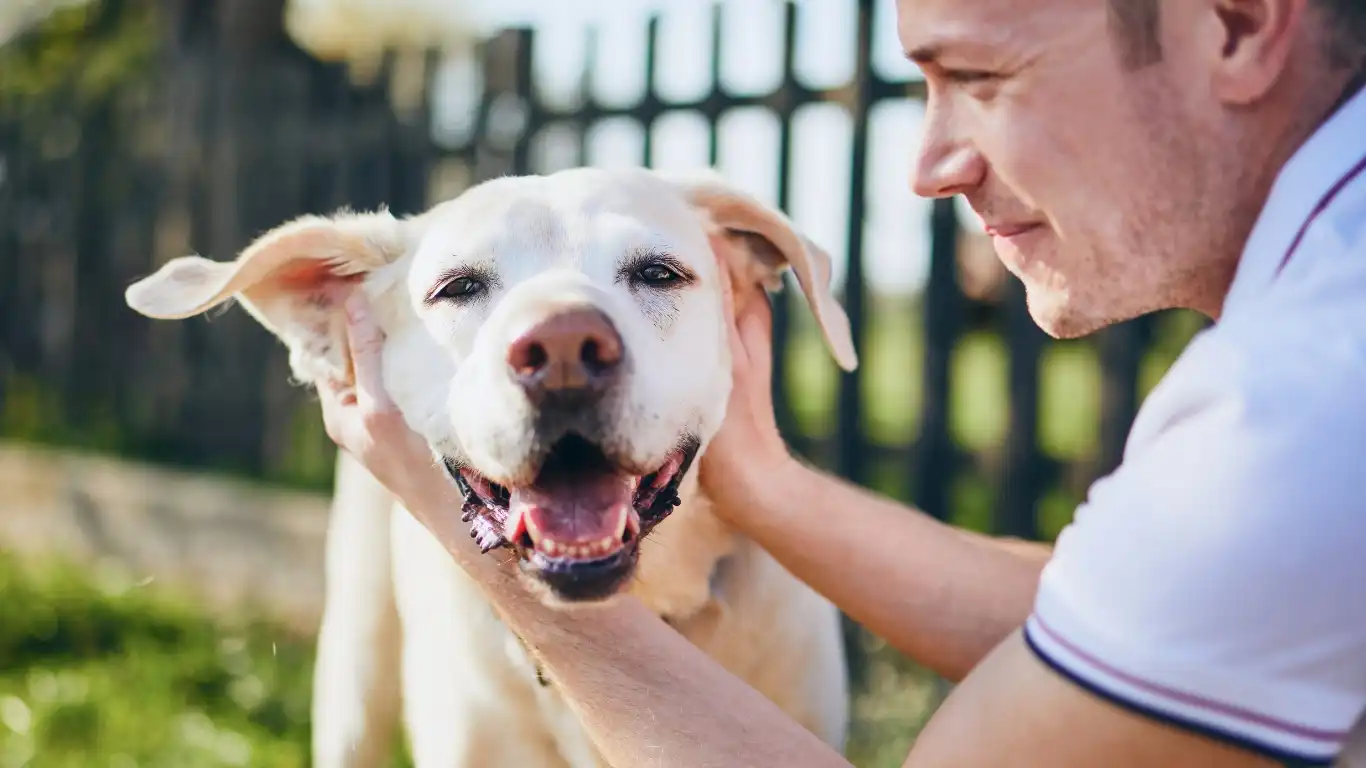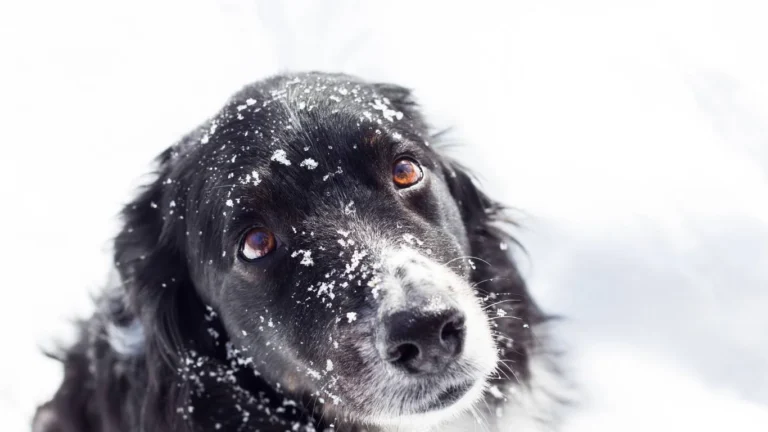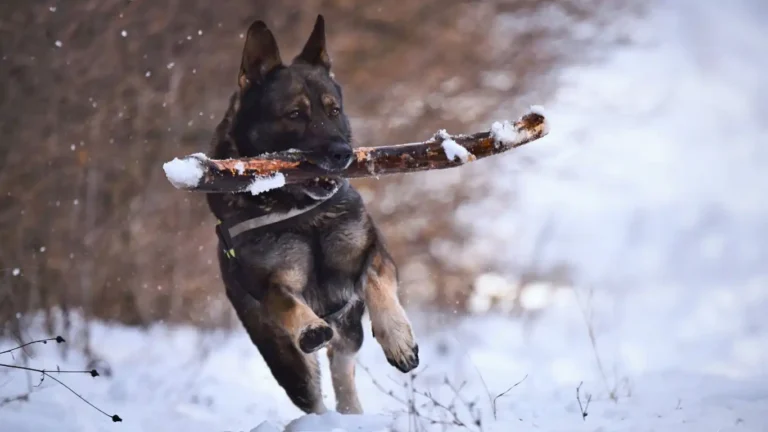Warning Signs Your Dog Needs a Vet Visit ASAP
If you’re wondering how to recognize when your dog needs a vet visit, you’re not alone. As a seasoned Veterinary Technician with a focus on canine nutrition, I’ve had countless heart-to-hearts with concerned pet parents who weren’t quite sure what counted as “normal dog behavior” versus signs of something serious. Trust me, I get it. Our dogs can’t exactly text us when something’s wrong. So, we’ve got to become their health detectives—learning to pick up on the small clues before they turn into bigger problems.
Subtle Signs Your Dog Might Be Unwell

Changes in Eating or Drinking Habits
It’s super easy to dismiss a skipped meal or a full water bowl as no big deal. But honestly? That could be the early whisper of a bigger issue. If your dog suddenly loses interest in food, or on the flip side, becomes unusually ravenous or thirsty, it’s worth a second look. In my experience, persistent appetite changes can signal anything from dental pain to metabolic conditions like diabetes or kidney issues.
Lethargy That’s Not Just a Lazy Day
We all love a good dog nap—but there’s a difference between your pup snoozing after a long walk and straight-up refusing to get up and play. If your dog seems unusually tired for more than a day or two, especially if paired with other symptoms, it could mean something’s brewing under the surface. When dogs are sick or in pain, they often go into “rest mode” to conserve energy. As a vet tech, I’ve seen dogs with everything from tick-borne illnesses to internal infections show their first signs just by being… off.
Unusual Behavior or Personality Shifts
Is your friendly furball suddenly growling when touched or hiding under the bed? That’s not just a bad mood—that’s a neon sign that something’s wrong. Dogs are naturally stoic animals; they don’t show discomfort the same way we do. Any sudden mood shift, aggression, clinginess, or withdrawal should never be shrugged off. I’ve had cases where a typically sweet Labrador became snappy overnight—and it turned out to be an abscessed tooth causing intense pain.
When It’s More Than Just an Upset Stomach

Vomiting and Diarrhea: What’s Normal?
Look, dogs eat weird stuff. (I once pulled half a tennis ball from a Beagle’s belly—don’t ask.) So a little tummy upset happens. But if your dog is vomiting multiple times in a day, or you’re seeing diarrhea for more than 24 hours, it’s vet time. Especially if there’s blood involved or signs of dehydration like sticky gums or sunken eyes.
Abdominal Pain or Bloating
Here’s a red flag that absolutely cannot wait: a hard, swollen belly combined with signs of discomfort (like pacing, panting, or whining). That could point to a condition called gastric dilatation-volvulus (GDV), also known as bloat. It’s life-threatening and needs immediate emergency care. I’ve worked on more than one emergency bloat case, and timing made all the difference. Don’t hesitate—just go.
Monitoring the Obvious: Visible Injuries and Limping

Limping Doesn’t Always Mean a Sprain
It’s tempting to wait out a limp, assuming your dog just twisted something. But prolonged limping—or limping that gets worse—can point to joint issues, ligament tears, or even bone cancer. One older Shepherd I worked with was limping for weeks before the owner brought him in. Turned out to be osteosarcoma. Early intervention could’ve made a big difference in managing his pain and quality of life.
Bleeding, Cuts, or Swelling
If you notice swelling, bleeding, or any wound that doesn’t seem to be healing, that’s your cue to see the vet. And if there’s pus or a bad odor? You’re likely dealing with an infection. Pro tip: always keep an eye on your dog’s paws and ears—hot spots and infected nail beds are sneakier than you’d think and can get nasty fast.
Trusting Your Gut as a Dog Parent
Honestly, the biggest advice I can give from my years in the clinic? Trust your instincts. You know your dog better than anyone. If something feels off—even if you can’t put your finger on what—it probably is. And catching things early gives your vet way more options to help. It’s not about overreacting; it’s about being proactive. I’ve seen far more cases where people waited too long than ones where they brought their dog in “for nothing.”
Skin, Coat, and Odor: Clues You Might Be Missing

Itching, Scratching, and Licking
Okay, real talk—some dogs are just itchy. But when the licking turns into chewing or the scratching keeps both of you up at night? Time to call the vet. I had one sweet Pit Bull patient who came in with constant paw licking. Turns out he had a food sensitivity to chicken. After a diet switch and some TLC, he was a whole new pup. So yes, sometimes it’s allergies. But it can also be mange, yeast infections, or fleas you’re not seeing. Trust me, it’s worth checking out.
Coat Condition and Odor
If your dog starts smelling… off, even after a bath, that could be your first warning sign. A musty or sour odor might point to a skin infection or even dental disease (which can cause really rank breath, by the way). Pay attention to dull or greasy coats, bald spots, or scabs—none of those are normal. And if your pup’s fur used to be soft and silky but now looks patchy or flaky? That’s a red flag.
How to Recognize When Your Dog Needs a Vet Visit: Watch the Eyes, Ears, and Nose

Eye Discharge or Cloudiness
I can’t tell you how many eye gunk cases I’ve seen. Some discharge is normal—especially in breeds like Bulldogs or Pugs—but thick, green, or yellow goop? Not good. Cloudy eyes or squinting could signal an ulcer or glaucoma, which can progress quickly. I’ve seen dogs lose vision because their people thought it was “just allergies.”
Ear Scratching, Head Shaking, or Funky Smells
Ears are a hot zone for infections, especially in floppy-eared breeds like Cocker Spaniels or Labs. If your dog is constantly shaking their head, scratching, or if you get a whiff of something yeasty or just plain gross—get it looked at. I’ve seen otitis (ear infections) that spread so deep, they affected balance. It’s not just a nuisance—it can be painful and damaging.
Nasal Discharge or Sneezing
A little sneeze here and there? No biggie. But frequent sneezing, bloody discharge, or green snot? Not so cute anymore. Dogs can get upper respiratory infections, just like us. One of my past patients—a Greyhound—had a persistent nasal discharge that turned out to be a nasal tumor. Not trying to scare you, but the point is: if something sticks around longer than it should, it’s worth a vet trip.
Urinary and Bowel Habits: TMI? Not for Your Vet

Changes in Urination
If your dog’s peeing more often, straining, or having accidents in the house, don’t chalk it up to “getting older.” It could be a urinary tract infection, bladder stones, or even diabetes. I once had a Chihuahua patient who started peeing in her sleep—turned out to be a hormone imbalance. With the right meds, she bounced right back. The sooner you catch it, the better the outcome.
Constipation or Difficulty Pooping
Yep, poop talk is part of dog parenting. If your dog is straining to go or producing rock-hard stools, that’s a signal. It could be dehydration, diet issues, or something more serious like a blockage. I once had a Dachshund come in who hadn’t pooped in 3 days—turns out she had eaten part of a sock (seriously, why do they do that?). Emergency surgery saved her, but it was a close call.
Breathing and Coughing: Don’t Ignore These Noises

Coughing, Wheezing, or Labored Breathing
A little reverse sneezing? Usually harmless. But deep, wet coughs, wheezing, or signs of labored breathing (like flared nostrils, open-mouth breathing, or blue gums)? That’s urgent. Especially for older dogs, these could be signs of heart disease, pneumonia, or tracheal collapse. I had a senior Yorkie come in with a dry cough—and sure enough, her chest x-ray showed an enlarged heart pressing on her windpipe. Early treatment helped her live comfortably for years after.
Snoring or Noisy Breathing When Awake
Some breeds are naturally noisy (looking at you, Frenchies). But if your dog suddenly starts snoring loudly while awake or seems to be struggling for air, don’t wait. Brachycephalic breeds, in particular, can develop breathing issues that worsen over time. Surgery might even be necessary to help them breathe better. Better to address it early rather than wait for an emergency.
Behavioral Red Flags That Could Signal Health Issues

Hiding, Shaking, or Acting Fearful
Dogs don’t always show pain in obvious ways. If your usually social pup is suddenly hiding, trembling, or acting fearful, they might not just be scared—they might be hurting. One Golden Retriever I worked with began hiding in closets… turned out she had arthritis pain that flared up in cold weather. Once we adjusted her treatment plan, she was back to her old goofy self.
Sudden Destructive Behavior
If your adult dog starts chewing things or having potty accidents out of the blue, it might not be a behavioral issue—it might be medical. Pain, anxiety, or even cognitive dysfunction in older dogs can lead to changes like this. Always rule out health problems before chalking it up to “just acting out.”
Sudden Weight Loss or Gain: Don’t Ignore the Scale

When Your Dog’s Body Changes Quickly
Let’s be real—dogs don’t just drop pounds or puff up overnight without a reason. If you’re seeing your pup’s ribs more than usual, or they’ve packed on weight even though their routine hasn’t changed, it’s time to dig deeper. Sudden weight loss can point to problems like parasites, diabetes, thyroid issues, or even cancer. I had a Boxer patient who dropped five pounds in just a month—her diagnosis was lymphoma. Her owner caught it early because she noticed her dog’s collar seemed looser. That tiny observation made a huge difference.
Obesity Is a Medical Issue, Too
On the flip side, unexpected weight gain can also be problematic. Sometimes it’s just overfeeding (those puppy eyes are powerful), but it could also mean hypothyroidism, Cushing’s disease, or fluid retention from heart issues. I always say: if your dog’s body changes and you didn’t do anything different, your vet needs to know. Prevention beats treatment every single time.
How to Recognize When Your Dog Needs a Vet Visit by Listening to Their Body Language

They May Not Speak, But They Communicate
We tend to look for dramatic symptoms—but honestly, dogs often give us quiet signs. A change in posture, pacing at night, tucking their tail, stiff walking… those are all ways your dog says, “Hey, I’m not okay.” I once had a senior Spaniel who started circling before lying down and avoiding stairs. Her arthritis was flaring up, and she was just trying to get comfy. After some meds and supplements, she started doing zoomies again. It’s the little wins that count!
Body Language Red Flags
- Unusual vocalizing (whining, whimpering, growling without cause)
- Sudden avoidance of touch or grooming
- Holding ears back or a tucked tail consistently
- Reluctance to move, jump, or climb stairs
- Constant pacing or inability to settle
If your dog shows any combo of these, especially more than once or for longer than a day, that’s your cue to get professional advice. Pain doesn’t always come with a limp—sometimes it’s just a look or a mood shift.
What to Do Before and During a Vet Visit

As someone who’s spent years behind the vet clinic counter and inside the exam room, let me tell you—good info helps us help your dog faster. Before heading in, jot down:
- When the symptoms started
- Any changes in food, treats, or routine
- Medications or supplements being used
- Frequency and severity of symptoms
Bring pictures or videos if you can. Trust me, a quick clip of your dog limping or coughing is a hundred times more helpful than trying to mimic it in the clinic.
During the Visit: Be Honest and Ask Questions
Don’t feel embarrassed. I’ve had people whisper to me, “He ate half a rotisserie chicken, bones and all.” (Yes, he was fine—after a very long night.) We’re not here to judge—we’re here to help. And don’t be afraid to ask questions, or ask for clarification. A good vet team will always take the time to make sure you understand what’s going on and what to do next.
Preventative Care: The Checkup You Shouldn’t Skip

Routine Visits Aren’t Just Formalities
Even if your dog seems fine, regular checkups can catch issues you’d never notice at home. Things like heart murmurs, early kidney disease, or dental decay can be completely silent at first. In my tech days, I’ve caught lumps, heart rhythm changes, and elevated liver values on perfectly “healthy” dogs during annual exams. Early treatment saved a lot of tails—literally.
Vaccinations, Blood Work, and Parasite Prevention
Wellness care matters. Keeping up with vaccines, monthly parasite prevention, and occasional blood work (especially for seniors) can prevent a ton of issues before they ever start. It’s not just about avoiding big bills later—it’s about quality of life. No one wants their dog uncomfortable or in pain when it could’ve been avoided.
Final Thoughts: You’re Your Dog’s Best Advocate
If there’s one thing I hope you take from all this, it’s that knowing how to recognize when your dog needs a vet visit could literally be life-changing. You don’t need a degree—you just need to pay attention and trust your gut. If something feels off, speak up. You’re your dog’s voice, their protector, and their whole world. And from someone who’s been on the inside of hundreds of vet visits, I promise—we’re always glad you came in, even if it turns out to be nothing.
References:
Disclaimer:
This article is for informational purposes only and is not a substitute for professional veterinary advice, diagnosis, or treatment. Always consult your veterinarian with any questions or concerns you may have regarding your dog’s health.






